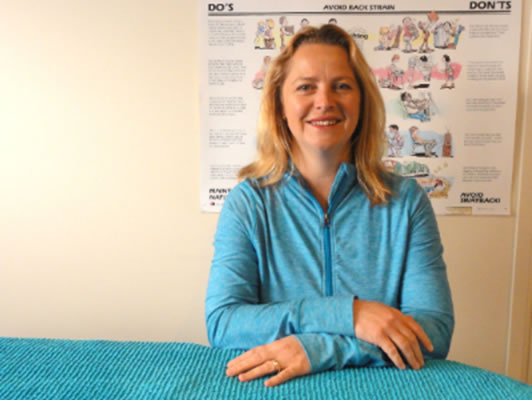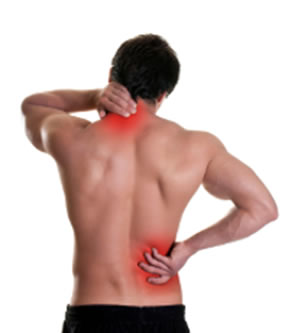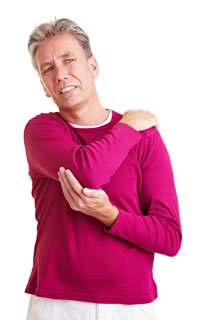- Home
- About Us
- Our Services
- News
- Contact Us


Osteopathy is a form of manual healthcare, which recognises the important, link between the structure of the body and the way it functions. Osteopaths focus on how the skeleton, joints, muscles, nerves, circulation, connective tissue and internal organs function as a holistic unit.
Using skilled evaluation, diagnosis and a wide range of hands-on techniques, osteopaths can identify important types of dysfunction in your body. Osteopathic treatment uses techniques such as stretching and massage for general treatment of the soft tissues (muscles, tendons and ligaments) along with mobilisation of specific joints and soft tissues.
In Australia, osteopaths are government registered practitioners who complete a minimum of five years' university training in anatomy, physiology, pathology, general medical diagnosis and osteopathic techniques.
Osteopaths are primary healthcare practitioners and are trained to recognise conditions that require medical referral. They are also trained to perform standard medical examinations of the musculoskeletal, cardiovascular, respiratory and nervous systems.
Osteopathy is covered by most private health funds and by Medicare's Chronic Disease Management (CDM) Plans. Osteopaths are registered providers for DVA patients, as well as by workers’ compensation schemes and motor accident insurers.
Each injury is unique so osteopathic treatment will vary from person to person.
Osteopaths assess the mobility of problem areas, ask you questions and make a diagnosis to work out the best treatment plan for each patient.
Osteopaths treat more than you think. They focus on how your skeleton, joints, muscles, nerves, circulatory system, connective tissue and internal organs function as a whole body unit.
Find out how osteopathy can help you.

The most common type of headache originates from tension, muscle stiffness or joint strain in the neck and upper thoracic region*.
Other causes include:
Depending on you presentation an osteopath may**:
Osteopaths, as primary health care practitioners, are trained to differentiate between headaches with common causes and those due to serious pathology. You should always seek advice from a health professional, including an osteopath, if you get a headache after a head trauma and/or the headache is getting worse.
You should also seek professional advice if the headache is accompanied by:
Did you know?
If you get regular headaches, try keeping a headache diary
If you experience headaches regularly, keeping a headache diary can help identify these triggers and ultimately help them avoid them. A headache diary allows you to record important details about your headaches, such as symptoms, frequency and other. This diary will provide your osteopath with important information.

80% of the population will suffer from back pain at some time.
Studies show that osteopathic treatment reduces back pain, increases mobility and speeds the recovery process*.
Your osteopath can assist you to develop the course of action consistent with your lifestyle, symptoms and goals to manage your back and neck pain.
Your osteopath may:
Osteopaths can be visited without a referral from a GP and are trained to know the difference between uncomplicated back pain and back pain requiring referral to specialist care. In some cases there may be a more serious cause for low back pain such as disc injury, fracture, tumour and infection, which requires ongoing specialist support.
Common causes of back and neck pain:

Pelvic pain can be caused by a wide variety of conditions. Osteopaths can help with pain caused by trauma or repetitive strain. Muscles from the abdomen and lower limbs attach to the pelvis and overuse or over exertion of these regions can result in pelvic injury and pain.
Your osteopath will work with you to determine the cause of your pain and decide on a course of treatment.
Common pelvic injuries include:
Symptoms of pelvic pain may include:
Osteopaths may help your pelvic pain by:




Sciatica is a painful syndrome caused by compression or irritation of the sciatic nerve. The sciatic nerve runs deep through the buttock and down the leg. Sciatica can range from a dull ache to an incapacitating pain. Symptoms may be constant or intermittent, depending on activities or time of day.
Osteopathy can be useful in relieving the symptoms of sciatica
Osteopaths will usually conduct a full musculoskeletal and orthopaedic examination to find the true underlying cause of the sciatica. Osteopaths treat the related joints, muscles, ligaments or tendons to reduce the pressure on the sciatic nerve.
Sciatica can often resolve quickly with the appropriate management and self-care.
Symptoms of sciatica may include the following:
The pain associated with sciatica can be caused by a number of underlying conditions. These may include:
Hip pain can be caused by a number of injuries or conditions. The most common cause of hip pain is inflamed tendons. Hip and groin pain can be related to a range of muscle or joint problems or it could be referred pain from your lower back.
Your osteopath will analyse your lower back and lower limb movement to help determine the cause of your pain. Because the hip is the centre of movement between the upper and lower parts of the body, it can easily be affected by poor movement control, posture or exercise.
Hip joint pain is often caused by a sitting position, landing awkwardly, certain sports, a sedentary lifestyle or arthritis. Hip joints can become sore when are held in a fixed position for a long time, or repeatedly moved into an uncomfortable position.
Minor and short term pain
Muscle pain often occurs in people who perform repeated sideways movements such as soccer players, dancers and AFL players. Many minor conditions can be painful but usually heal within a few days.
For muscular pain, your osteopath will look at the other muscles around your hip and groin to understand the cause of your discomfort.
Long term pain
Longer-term pain may be caused arthritis or bursitis. If pain is caused by arthritis your osteopath can help but may also suggest you see a GP for any additional medications or treatment.
Your osteopath will work with you to improve your posture, discuss the way you move or why you may be experiencing hip problems.
Shoulder pain has become extremely common over recent years as a result of frequent computer and smartphone usage and increased sedentary lifestyle.
Shoulder pain is often very complex. As a result, shoulder injuries can be more difficult to treat.
Common Shoulder injuries include:
Symptoms of shoulder pain may include:
Osteopaths may help your shoulder pain by*:
Your osteopath may also refer you to a GP for any additional medications or treatment.
Elbow pain often occurs due to a variety of sports and occupations that involve repeated pressure on the muscles and tendons near the elbow joint. This pressure can cause the muscles to become strained and tendons to become inflamed. You will often notice the pain when using your wrist or hand. Your osteopath will work with you to determine the cause of your pain and decide on a course of treatment.
Common elbow injuries include:
Symptoms of elbow pain:
Osteopaths may help your elbow pain by: